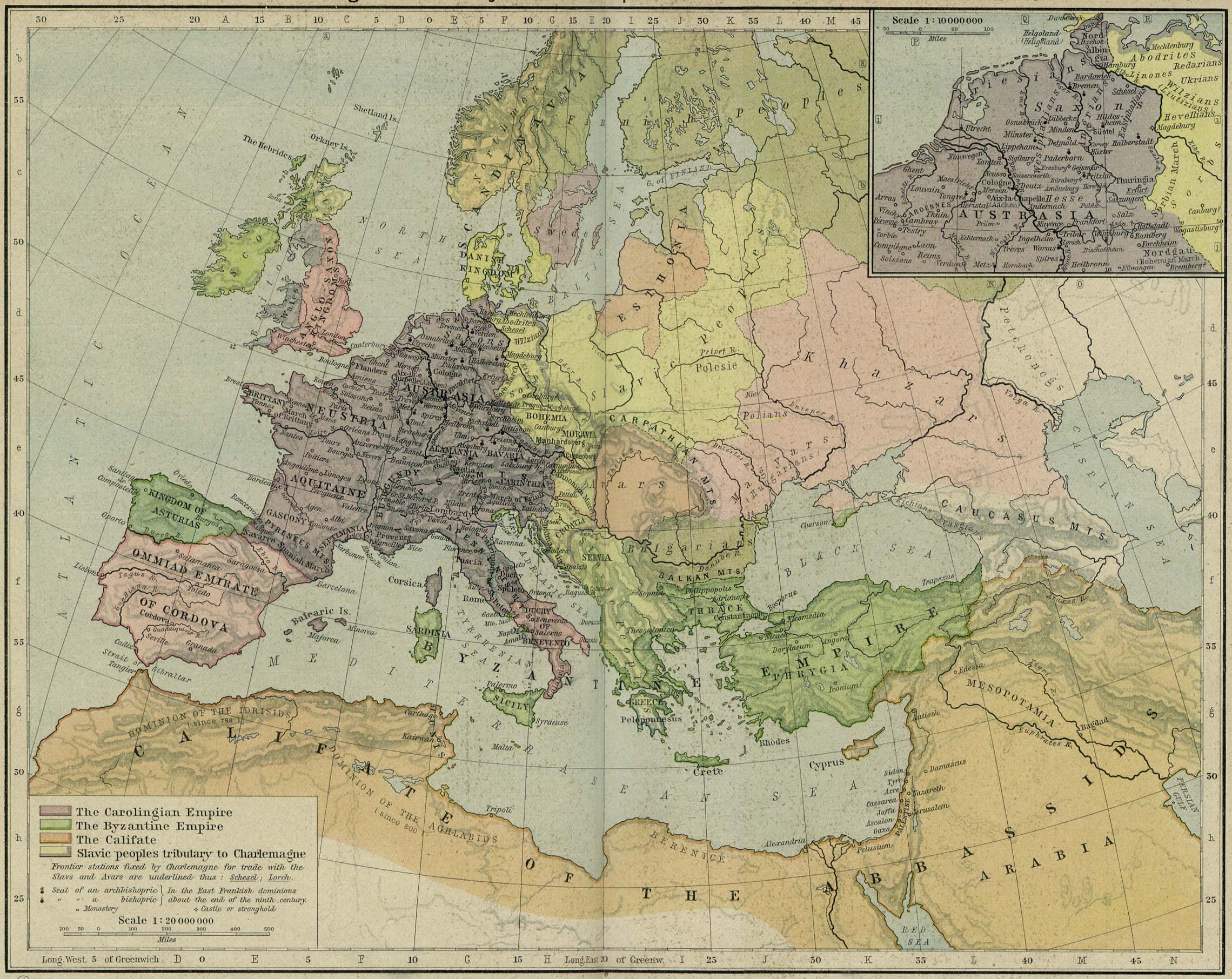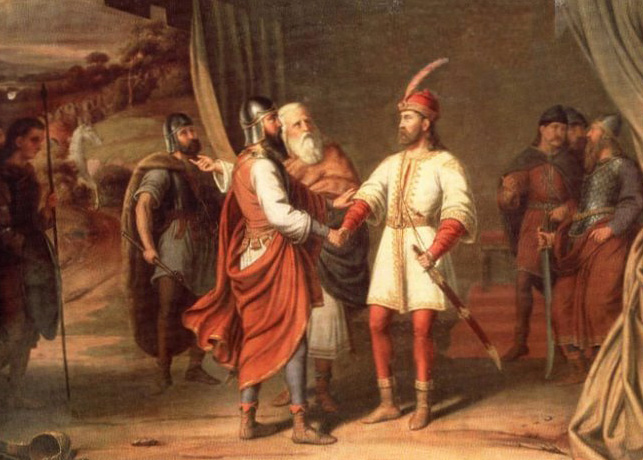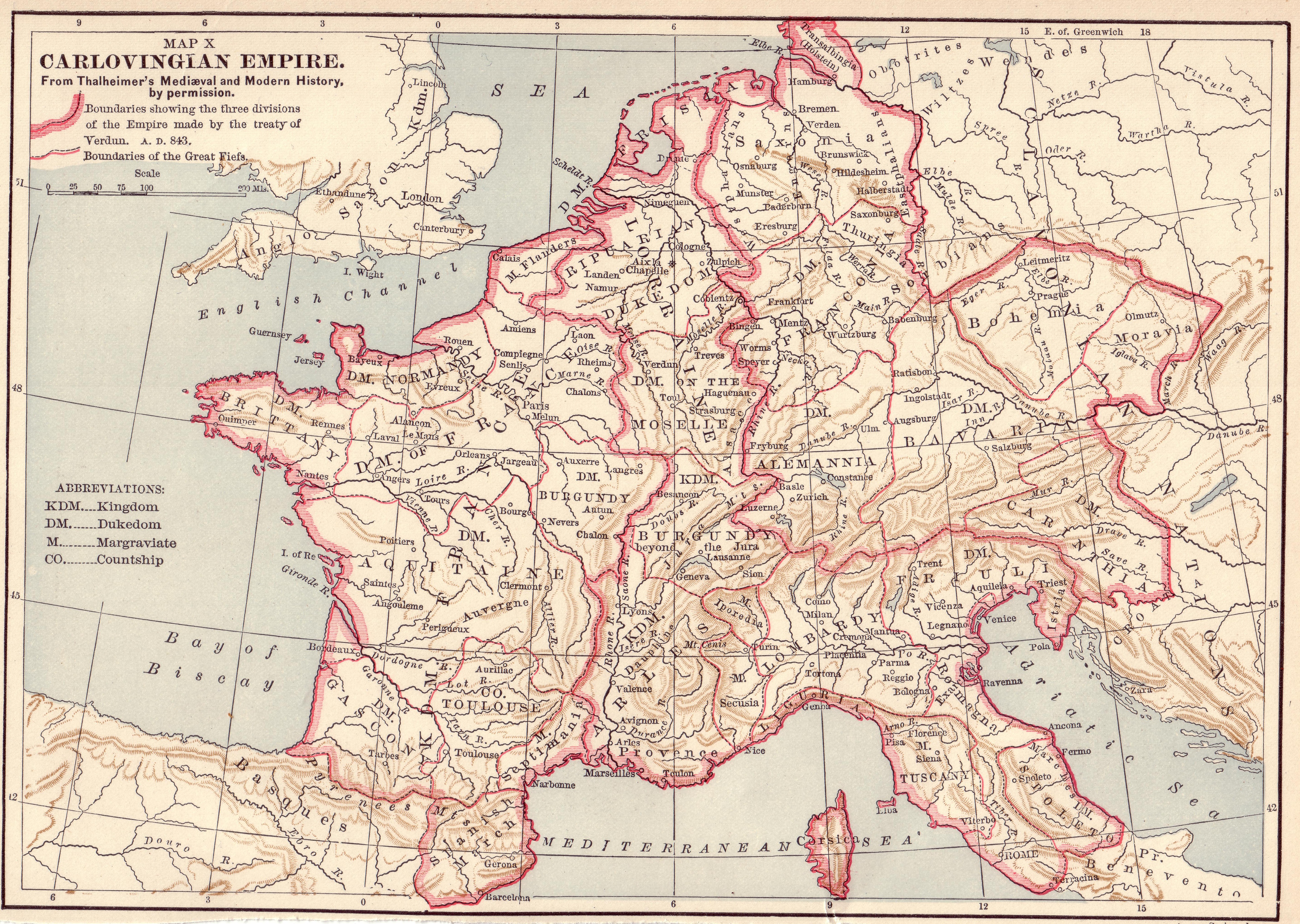|
Borna (duke)
Borna was the Duke of Croatia from to 821 and vassal of the Frankish Empire. He resided in Nin and was the ruler of most of the Croats in northern Dalmatia.John Van Antwerp Fine: The Early Medieval Balkans: A Critical Survey from the Sixth to the Late Twelfth Century, 1991, p. 255 Borna's predecessor was Višeslav of Croatia, probably his father. After his death in 821, he was succeeded by his nephew Vladislav. He is mentioned in the Royal Frankish Annals (''Annales regni Francorum'') in entries regarding 818–821. His titles were "Duke of the Guduscani" (a Croatian tribe from Lika and northern Dalmatia) in 818; "Duke of Dalmatia" in 819; "Duke of Dalmatia and Liburnia" in 821. Historiography treats him as a ruler of '' Dalmatian Croatia''. History Borna is documented in the "Royal Frankish Annals" (''Annales regni Francorum''). He is first mentioned regarding an 818 meeting at Herstal of Frankish Emperor Louis the Pious with envoys of the Obotrites, Borna (duke of the Gud ... [...More Info...] [...Related Items...] OR: [Wikipedia] [Google] [Baidu] |
Duke Of Croatia
This is a complete list of rulers of Croatia under domestic ethnic and elected dynasties during the Croatian Kingdom (925–1918). This article follows the monarch's title number according to Hungarian succession for convenience. For example, the Hungarian monarch Béla IV is according to Croatian succession correctly titled Béla III. This is because Hungarians had a king named Béla prior to the incorporation of Croatia under the Hungarian Crown but the Croats did not. Early history The details of the arrival of the Croats in the Balkans are sparsely documented by reliable historical sources. Around 626 CE, Croats migrated from White Croatia (around present-day Galicia) at the invitation of the Byzantine Emperor Heraclius. According to a legend recorded in the 10th-century '' De Administrando Imperio'', the Croats came to their present region under the leadership of five brothers (called Kloukas, Lobelos, Kosentzis, Mouchlo, and Chrobatos) and of two sisters (called Touga an ... [...More Info...] [...Related Items...] OR: [Wikipedia] [Google] [Baidu] |
Croatian Biographical Lexicon
''Croatian Biographical Lexicon'' ( hr, Hrvatski biografski leksikon) is a multi-volume biographical and bibliographical encyclopedia in Croatian, published by the Miroslav Krleža Institute of Lexicography. It contains biographies of prominent Croats, as well as foreigners who participated in Croatian public life and have left their mark on the history of Croatia. The project was launched in the second half of the 1970s. Seven volumes have been published so far with a total of 10,218 articles (3,524 illustrations). The Editor-in-Chief of the first volume was Nikica Kolumbić Nikica Kolumbić (6 October 1930 - 1 March 2009) was Croatian historian and lexicographer. He was born in Zagreb. He graduated Croatian studies at the Faculty of Philosophy in Zagreb in 1955, receiving a PhD in 1964 with a thesis ''On the origin ..., of the second volume Aleksandar Stipčević, and since 1990 the Chief Editor has been Trpimir Macan. Many of the biographies in the Lexicon have been rese ... [...More Info...] [...Related Items...] OR: [Wikipedia] [Google] [Baidu] |
Battle Of Kupa
The Battle of Kupa occurred at Kupa river in 819. It involved Frankish vassal Duke Borna of Dalmatia, with an army of Guduscani, against the advancing army of Frankish rebel, Duke Ljudevit of the Slavs in Lower Pannonia. During the battle, the Guduscans abandoned Borna and joined Ljudevit. While Borna's forces suffered massive losses, he managed to escape with his bodyguards. However, Dragomuž, Ljudevit's father-in-law, who sided with Borna, was killed. Ljudevit suffered heavy casualties that included 3,000 soldiers and over 300 horses. Afterwards, Ljudevit used the momentum to invade Dalmatia in December 819. Sources * Kupa 9th-century military history of Croatia Kupa The Kupa () or Kolpa ( or ; from la, Colapis in Roman times; hu, Kulpa) river, a right tributary of the Sava, forms a natural border between north-west Croatia and southeast Slovenia. It is long, with its border part having a length of and ... 819 9th century in Croatia {{Croatia-hist-stub ... [...More Info...] [...Related Items...] OR: [Wikipedia] [Google] [Baidu] |
Ingelheim
Ingelheim (), officially Ingelheim am Rhein ( en, Ingelheim upon Rhine), is a town in the Mainz-Bingen district in the Rhineland-Palatinate state of Germany. The town sprawls along the Rhine's west bank. It has been Mainz-Bingen's district seat since 1996. From the later half of the 8th century, the Ingelheim Imperial Palace, which served emperors and kings as a lodging and a ruling seat until the 11th century, was to be found here. Etymology The typically Rhenish-Hessian placename ending ''—heim'' might well go back to Frankish times, that is to say, likely as far back as the 5th or 6th century. Settlements or estates then took their lords’ names and were given this suffix, which means "home" in German. The name is recorded in later documents as ''Ingilinhaim'', ''Ingilinheim'' (782), ''Ingilenhaim'', ''Engelheim'', ''Hengilonheim'', ''Engilonheim'' (822), ''Engilinheim'' (826), ''Hingilinheim'' (855), ''Ingilunheim'' (874), ''Ingulinheim'' (889), ''Ingelesheim'' (891 ... [...More Info...] [...Related Items...] OR: [Wikipedia] [Google] [Baidu] |
Gacka
Gacka is a river located in the Lika region in central Croatia. Because for a large part of its course it is a subterranean river, estimates on its length vary. The overground part has undergone substantial human intervention - before it was long; now it is only long.Lika-Senj County Tourist Board, It has been regulated by man to flow into an aqueduct in Gusić polje (known as Tunel Gacka-Gusić Jezero) and then into the Adriatic Sea through a hydroelectric installation ''HE Senj'' near Sveti Juraj. HE Senj takes inflow from Gacka and Lika, since it was built in 1965. The river passes through karst fields and most notably the town Otočac, and its headwaters are known as a popular locale for trout Trout are species of freshwater fish belonging to the genera '' Oncorhynchus'', '' Salmo'' and '' Salvelinus'', all of the subfamily Salmoninae of the family Salmonidae. The word ''trout'' is also used as part of the name of some non-sa ... fishing. [...More Info...] [...Related Items...] OR: [Wikipedia] [Google] [Baidu] |
March Of Friuli
The March of Friuli was a Carolingian frontier march, established in 776 as the continuation of the Lombard Duchy of Friuli, established against the Slavs and Avars. It was ceded to the Duchy of Bavaria as the March of Verona in 952. Its territory comprised parts of modern-day Italy, Slovenia and Croatia. History After Charlemagne had conquered the Italian Kingdom of the Lombards under King Desiderius at the Siege of Pavia in 774, he at first allowed the Lombard duke Hrodgaud to continue ruling in Friuli. Charlemagne attached the March of Istria to Friuli. According to the Royal Frankish Annals, Hrodgaud two years later revolted declaring himself a King of the Lombards, whereafter Charlemagne came rushing into Italy where he routed the duke's forces and had him deposed and killed. The autonomous Lombard duchy was dissolved and incorporated into Francia. From 776, Friuli was ruled by Frankish appointees, who continued to bear the title of a ''dux Foroiuliensis''. To ... [...More Info...] [...Related Items...] OR: [Wikipedia] [Google] [Baidu] |
Slavs In Lower Pannonia
Early Slavs settled in the eastern and southern parts of the former Roman province of Pannonia. The term ''Lower Pannonia'' ( la, Pannonia inferior, hu, Alsó-pannoniai grófság, sh-Latn-Cyrl, Donja Panonija, Доња Панонија, sl, Spodnja Panonija) was used to designate those areas of the Pannonian plain that lie to the east and south of the river Rába, with the division into ''Upper'' and ''Lower'' inherited from the Roman terminology. From the middle of the 6th to the end of the 8th century, the region was under the domination of the Avars, while the Slavic inhabitants lived under Avar rule. By the beginning of the 9th century, that state was destroyed and replaced by the supreme rule of the Frankish Empire, which lasted until the Magyar conquest (c. 900). During the Frankish period, the region of Lower Pannonia was governed by local Slavic rulers, who were under the suzerainty of Frankish kings. Within the Frankish administrative system, the March of Pannonia ... [...More Info...] [...Related Items...] OR: [Wikipedia] [Google] [Baidu] |
Ljudevit (Lower Pannonia)
Ljudevit () or Liudewit ( la, Liudewitus), often also , was the Duke of the Slavs in Lower Pannonia from 810 to 823. The capital of his realm was in Sisak (today in Croatia). As the ruler of the Pannonian Slavs, he led a resistance to Frankish domination. Having lost the war against Franks, he fled to the south, presumably to Dalmatia, first to an unknown Serb župa (a topic of historical debates), and then to the Croat ruler Ljudemisl, who treacherously killed him. Rebellions against the Franks In 818 Ljudevit sent his emissaries to Emperor Louis in Heristal. They described the horrors conducted by Margrave Cadolah of Friuli (800-819) and his men in Pannonia, but the King of Franks refused to make peace. Ljudevit raised a rebellion against his Frankish rulers in 819 after he was seriously accused by the Frankish court. The Emperor Louis the Pious (814-840) sent Cadolah to quell the rebellion. The Frankish Frontier forces led by Cadolah have raided the land and tortured the po ... [...More Info...] [...Related Items...] OR: [Wikipedia] [Google] [Baidu] |
Obotrites
The Obotrites ( la, Obotriti, Abodritorum, Abodritos…) or Obodrites, also spelled Abodrites (german: Abodriten), were a confederation of medieval West Slavic tribes within the territory of modern Mecklenburg and Holstein in northern Germany (see Polabian Slavs). For decades, they were allies of Charlemagne in his wars against the Germanic Saxons and the Slavic Veleti. The Obotrites under Prince Thrasco defeated the Saxons in the Battle of Bornhöved (798). The still heathen Saxons were dispersed by the emperor, and the part of their former land in Holstein north of Elbe was awarded to the Obotrites in 804, as a reward for their victory. This however was soon reverted through an invasion of the Danes. The Obotrite regnal style was abolished in 1167, when Pribislav was restored to power by Duke Henry the Lion, as Prince of Mecklenburg, thereby founding the German House of Mecklenburg. Obotritic confederation The Bavarian Geographer, an anonymous medieval document compiled in ... [...More Info...] [...Related Items...] OR: [Wikipedia] [Google] [Baidu] |
Louis The Pious
Louis the Pious (german: Ludwig der Fromme; french: Louis le Pieux; 16 April 778 – 20 June 840), also called the Fair, and the Debonaire, was King of the Franks and co-emperor with his father, Charlemagne, from 813. He was also King of Aquitaine from 781. As the only surviving son of Charlemagne and Hildegard, he became the sole ruler of the Franks after his father's death in 814, a position which he held until his death, save for the period 833–34, during which he was deposed. During his reign in Aquitaine, Louis was charged with the defence of the empire's southwestern frontier. He conquered Barcelona from the Emirate of Córdoba in 801 and asserted Frankish authority over Pamplona and the Basques south of the Pyrenees in 812. As emperor he included his adult sons, Lothair, Pepin and Louis, in the government and sought to establish a suitable division of the realm among them. The first decade of his reign was characterised by several tragedies and embarrassments, ... [...More Info...] [...Related Items...] OR: [Wikipedia] [Google] [Baidu] |
List Of Frankish Kings
The Franks, Germanic-speaking peoples that invaded the Western Roman Empire in the 5th century, were first led by individuals called dukes and reguli. The earliest group of Franks that rose to prominence was the Salian Merovingians, who conquered most of Roman Gaul, as well as the Gaulish territory of the Visigothic Kingdom, in 507 AD. The sons of Clovis I, the first King of the Franks, conquered the Burgundian and the Alamanni Kingdoms. They acquired a province, called Provence, and went on to make the peoples of the Bavarii and Thuringii their clients. The Merovingians were later replaced by the new Carolingian dynasty in the 8th century. By the late 9th century, the Carolingians themselves had been replaced throughout much of their realm by other dynasties. A timeline of Frankish rulers has been difficult to trace since the realm, according to old Germanic practice, was frequently divided among the sons of a leader upon the leader's death. However, territorie ... [...More Info...] [...Related Items...] OR: [Wikipedia] [Google] [Baidu] |






